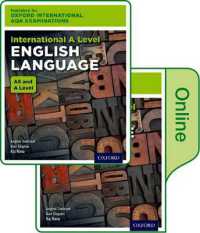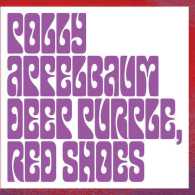Full Description
Are you looking for an engaging and accessible resource to support your understanding of classroom instruction? This authors of this text provide you with engaging narrative that brings K-12 classrooms to life. A reflective planning model introduced in the beginning of the text helps you make the important connection between planning and addressing curriculum standards. In addition to reflective teaching, this edition explores classroom management, diversity, standards, curriculum and lesson planning, active and authentic learning, technology in education, assessment, and working in the school community. Because this edition also pays specific attention to professional standards (INTASC, curriculum standards, and Praxis II) you will gain confidence as you prepare for a career in teaching.
Contents
Chapter 1Thinking and ActionReflective Action Builds on WithitnessWithitnessReflective Action as it Relates to WithitnessNational StandardsReflecting on Your Ethics and PrinciplesA Graphic Model of reflective Action in TeachingCommunicating With ParentsGuided Group ExplorationReferencesChapter 2: Creating a Safe, Healthy, and Happy Classroom The First Week of SchoolDiana's Reflective ProcessStrategies Designed to Meet Student NeedsPlanning for the First Day of SchoolTeacher's Body LanguageEstablishing Rules and ConsequencesUsing Positive Consequences and RewardsReflective Action Case StudyClassroom MeetingsIssues in Classroom ManagementEconomic and Social Differences May Cause Varied Expectations of StudentsCheating by Students and TeachersEstablishing Two-Way Communication with ParentsTeaching Students How to Resolve ConflictsReflective Action Case StudyScheduling Time for Active LearningDaily and Weekly SchedulesPlanning TimeCommunicating with ParentsGuided Group ExplorationReferencesChapter 3: Lesson Planning and Sequencing Clarifying Educational Goals and OutcomesWriting Useful and Appropriate Outcome StatementsWriting Objectives o Fit Goals and Outcome StatementsEducational ObjectivesPlanning for Higher Level ThinkingPlanning Lessons for Active learningPredicting Possible Outcomes of Your Lesson PlansVarying Objectives for Students with Special NeedsWriting a Well Organized Lesson PlanA Lesson Plan ModelSequencing Objectives in School SubjectsSequencing Objectives in MathematicsSequencing Objectives in Language ArtsSequencing Objectives in ScienceSequencing Objectives in Social StudiesSample Lesson PlansSample First Grade Lesson PlanSample Science Lesson PlanLong Term Curriculum PlanningAn Example of a Middle School Plan for MathematicsCollaborative Long-Term PlanningHigh School Teachers Collaborate in Long-Term PlanningCommunicating With ParentsPlaying Catch UpGuided Group ExplorationReferencesChapter 4: Planning Curriculum Units Planning Curriculum UnitsDiane Leonard's First 3 Months at SchoolHow School Curricula Are PlannedNational Standards and Federal MandatesState Standards are the Basis for Curriculum PlanningOther Influences that Affect Curriculum PlanningEvaluation and Use of TextbooksPlanning Thematic Units to Fit Your CurriculumDeciding on a Unit FocusCreating a Curriculum Unit Using reflective ActionSequencing Learning ExperiencesDesigning the Curriculum to Reflect Multicultural ValuesPlanning Curriculum for a Multicultural Bilingual ClassroomTime Lines that Fit Your Goals and Outcome StatementsExamples of Thematic UnitsA Multi-disciplinary Primary UnitA Fourth Grade Social Studies/Literature UnitA Middle School Mathematics UnitA Science Unit at Yellowstone ParkLong Range Planning for Unit StudyLanguage Arts Planning for the Primary GradesCommunicating With ParentsPlaying Catch UpGuided Group ExplorationReferencesChapter 5: Assessing Students' Diverse Needs Language Acquisition and the Classroom TeacherLanguage ScaffoldingThe Stages of Language AcquisitionFive Factors in Meeting the Needs of Diverse StudentsThe Forgotten MinorityInteractive Goal SettingBuilding Self-Esteem and Intrinsic MotivationThe Enhancing Effects of SuccessReforming Schools to Provide Multicultural ValuesUsing Assessment Devices to Identify Student Needs Interpreting Data from Students' Cumulative FoldersAvoid Labeling StudentsAuthentic Assessment for a Diverse Student BodyPlacement and Grouping DecisionsPerformance SamplingCommunicating With ParentsPlaying Catch UpGuided Group ExplorationReferencesChapter 6: Establishing a Basis for Active, Authentic learning Retrieval ProcessSchema TheoryAdvance OrganizersDifferentiated Instructional StrategiesPresentation Skills that Increase Clarity and MotivationGetting Students' AttentionEnthusiasmClaritySmooth TransitionsTimingVariationInteractionSystematic Classroom InstructionDirect Instruction of New Knowledge and SkillsTeacher Modeling and DemonstrationsStructuring Tasks for SuccessMatching Learning Styles and Teaching StylesLearning Experiences Designed for Multiple IntelligencesCommunicating With ParentsGuided Group ExplorationReferencesChapter 7: Teaching Strategies That Increase Authentic learning Examples of Teaching Strategies in ActionDiscovery LearningInquiry TrainingRole PlayingStorytellingSimulationMastery LearningContracts for Independent learningGroup Rotations Using Learning CentersReflective Action Case Study - Establishing Learning CentersCooperative learning StrategiesLearning Teams Enhance AchievementCooperative learning of the Basic SkillsCooperative learning in ScienceLiterature CirclesPeacemaking GroupsCreating Well-Balanced Cooperative GroupsThe Effects of Cooperative LearningCommunicating With ParentsGuided Group ExplorationReferencesChapter 8: Engaging Students in Classroom Discussions Asking Questions that Stimulate Higher Level ThinkingStrategies for Interactive DiscussionsGroup InvestigationsDiscussions that Promote Critical ThinkingDiscussions that Improve Observations SkillsDiscussions that Enhance Comparison SkillsDiscussions that Guide Classification SkillsDiscussions that Identify AssumptionsSocratic DialoguesDiscussions that Enhance Creative ThinkingDiscussions that Encourage Imagination and InventivenessPrewriting DiscussionsDiscussions that Address Multiple IntelligencesRole of the teacher in Leading DiscussionsCommunicating With ParentsGuided Group ExplorationReferencesChapter 9: Balancing Standards and Creative Activities The Importance of the ArtsEncourage Creativity - Provide MaterialsMaterials from HomesMaterials from MerchantsOther Sources of MaterialsSetting a Creative ToneCreative AtmosphereHow to Encourage Creativity in StudentsThe Self-Fulfilling ProphesyStereotypes Stifle CreativityWays to Demonstrate Valuing CreativityCore Attitudes in Creative ThoughtCreativity in the Language ArtsEmail storiesCreative Activities in MathematicsCreative Activities in Social SciencesCreative Activities in ScienceCreative Activities in the Visual and Performing ArtsHumor and CreativityStyles of Humor-oriented TeachingCreativity TrainingCommunicating With ParentsPlaying Catch UpGuided Group ExplorationReferencesChapter 10: Assessing and Reporting Student Accomplishments How teachers Select and Use Assessment ProceduresInformal ObservationsPerformance Tasks to Show Mastery of ObjectivesRubric for Communication Skills and Oral PresentationsCriterion-Referenced Quizzes and TestsMastery Learning AssessmentEssays Evaluated with Rubric GuidelinesOral Reports and ExaminationsDesigning Authentic Assessment TasksRubrics, Checklists, and Rating ScalesLearning ContractsPortfolios of Student ProductsReflective Action Case Study - A Teacher's Reflection on Portfolio AssessmentVideotape RecordsGrading Cooperative Group Projects and ProductsReporting Student AccomplishmentsElectronic Management SystemsComputation of GradesWriting Anecdotal RecordsInvolving Students in Evaluation ProceduresCommunicating With ParentsPlaying Catch UpGuided Group ExplorationReferencesChapter 11: Integrating Technology into the Curriculum Preparing Students to Thrive in a High -Tech WorldUsing technology to Track How Teachers Meet State StandardsReasons to Incorporate Technology into Your CurriculumManaging Your Classroom With (and For) TechnologyEnhancing Your Instructional Strategies with Productivity SoftwareWord Processing ProgramsPresentation SoftwareData ManipulationSpreadsheetsDatabasesEducational SoftwareExtending Classroom Experiences Beyond the Classroom WallsComputer-Assisted Research ProjectsComputer Literacy Program at Beardsley SchoolTracking the Return of Spring on the InternetThe Advantages of Teacher to Teacher NetworkingCommunicating With ParentsPlaying Catch UpGuided Group ExplorationReferencesChapter 12: Reflecting on Teaching and the School Community The Teacher's Role in he CommunityNo Child Left BehindTwo-Way Communication with ParentsFall Open HouseParent-Teacher ConferencesTalking to Parents about UnderachievementThrough the Eyes of ParentsTeaching and Learning in a Multicultural CommunityVisits to Students' HomesNewsletters and NotesTelephone CallsSpring Open House and Other Special EventsCommunity Involvement in Classroom ActivitiesParents as VolunteersCommunity ResourcesCharacter and Moral Education ProgramsTeachers Mentoring and Coaching One AnotherInteracting with Colleagues in Creating Professional PortfoliosThe Powerful Influence a Teacher Can MakePlaying Catch UpGuided Group ExplorationReferences








